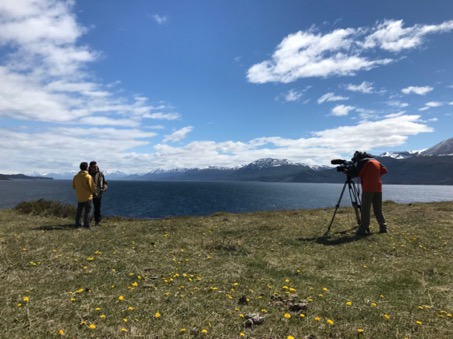ECOS Sud CONICYT Chili
Project leader
G. Siani (GEOPS) and Ricardo De Pol Holz (Centro de Investigación GAIA-Antárctica (CIGA) and Center for Climate and Resilience Research Universidad de Magallanes)
Other participants
S. Duchamp-Alphonse (GEOPS), E. Michel (LSCE), C. Kissel (LSCE), C. Latorre Hidalgo (Pontificia Universidad Católica de Chile).
Project / Programme
The impact of circulation changes and the melting of the Patagonian ice sheets on the regulation of atmospheric CO2 by the Southern Ocean.
This project is based on very close cooperation between three teams from the Nucleo Milenio Paleoclima Hemisferio Sur (NMPHS) at the Universidad de Magallenes and the Universidad Católica de Chile in Chile, and the GEOPS and LSCE labs in France.
Objectives
The Southern Ocean (SO) and its circulation play a fundamental role in the global climate system. In fact, a key element of thermohaline circulation is the return route of water masses from the deep ocean to the surface via the dynamic of upwelling. This return route is in part controlled by latitudinal position and the intensity of westerly winds. In recent years, the study of the Southern Ocean and its upwellings has become a priority for a better understanding of the climate system since they control the quantities of heat and carbon transferred from the deepest ocean reservoir to the surface ocean and the atmosphere.

Up until now, most studies have considered either the role played by the physical pump, or that played by the biological pump, to explain this transfer of carbon from the ocean to the atmosphere. However, the increase in upwelling in the Southern Ocean over the last glacial transition has led to an increase in exported biological production. It is, therefore, desirable to study the interactions between the two CO2 pumps by looking at high resolution climatic records sampled in key areas of the Southern ocean. The western part of South America and the adjacent South-East Pacific, are unique regions for answering key questions regarding the evolution of the world’s climate due to their transitional position between subtropical and subarctic climate regimes. This study region features important interactions between the various components of the climate system: large scale atmospheric circulation, Southern Ocean circulation, and CO2 exchange between the atmosphere and the ocean.

Within the framework of the ECOS Sud-CONICYT cooperative programme, we propose a multi-tracer study of marine sedimentary cores from the South-East Pacific sector of the Southern Ocean. The last Glaciation and the transition to the Holocene are the most promising climate periods for studying the evolution of biological and physical CO2 pumps because they are characterized by major changes in global-scale ocean circulation. In particular, we aim to gain a better understanding of the impacts of the melting of the Patagonian ice sheets and ocean circulation on the regulation of atmospheric CO2 by the Southern Ocean. In addition, the high sedimentation rates of our climate archives will allow us to obtain high quality data with very robust temporal control.

